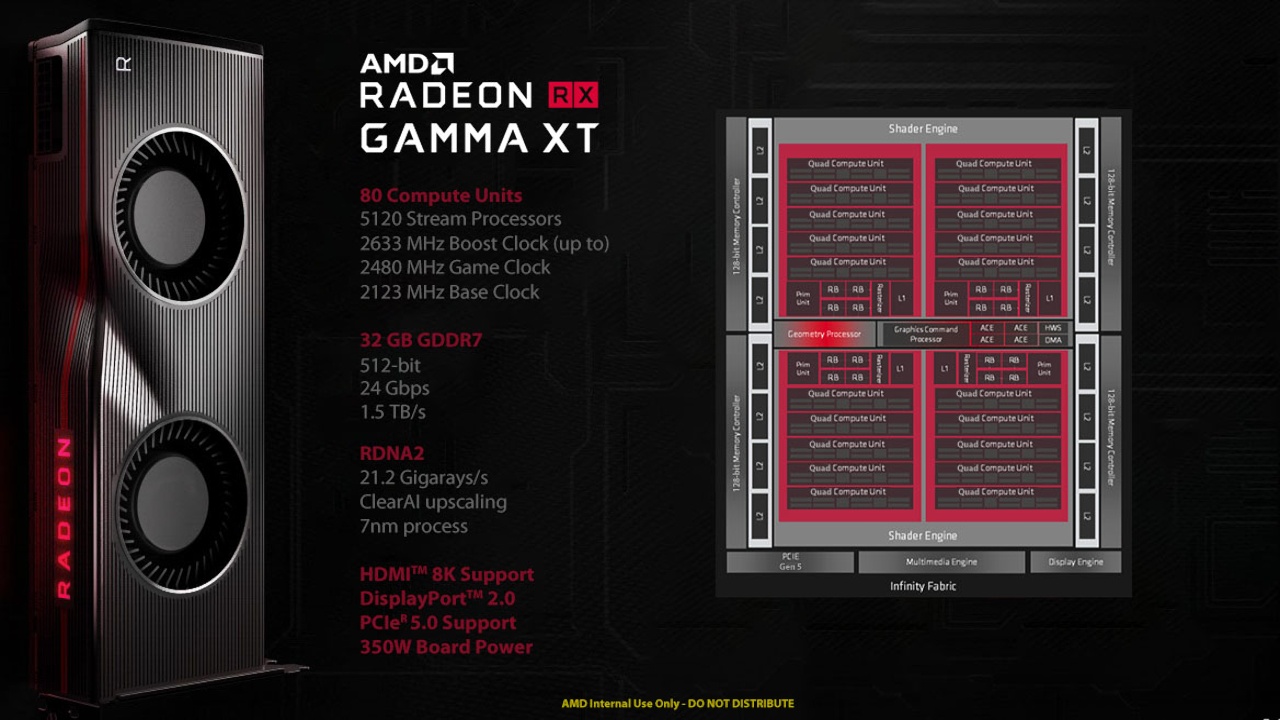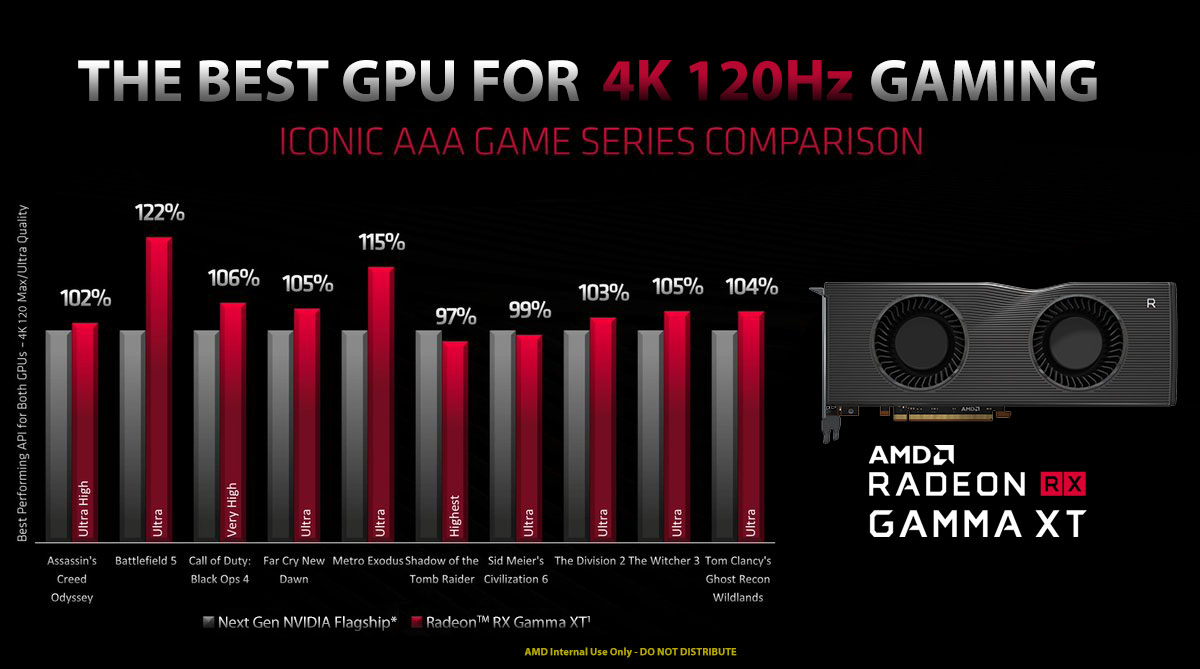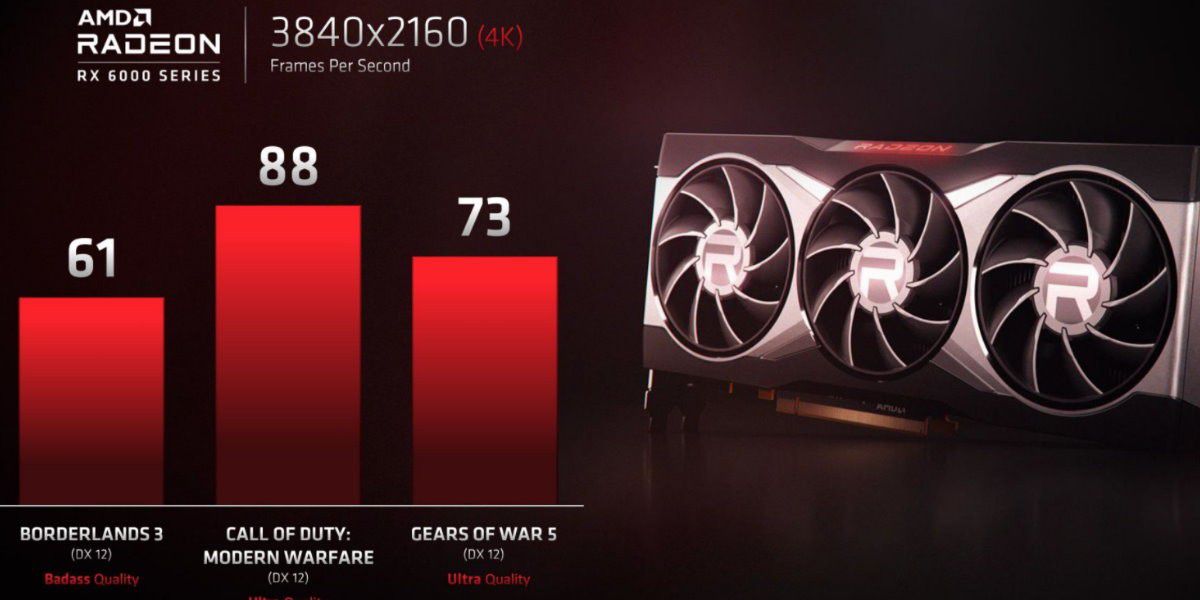When you first click on the Radeon RX Gamma XT news, the heart of every hardware enthusiast will beat faster. If only it wasn’t an April Fool’s Day.
April 1 does not stop at “serious” hardware issues. For example, Wccftech gave an AMD Radeon “Big Navi” Gamma XT, the allegedly leaked new AMD flagship graphics card. The specifications are completely exaggerated, but taking a look can’t hurt.
We therefore ask the question: How much truth is there in the fake news and what do we already know about the technologies of the future?
The alleged specs of the Radeon RX Gamma XT at a glance:
- 80 compute units / 5,120 stream processors, 26.6 TLOPs
- 2.123 / 2.480 / 2.633 MHz base / game / boost clock
- 32 GB GDDR7 video memory, 512 bit, 24 Gbps, 1.5 TB / s
- DisplayPort 2.0, PCI Express 5.0
- RDNA2: 21.2 Giga Rays / s, ClearAI upscaling, 7nm production
The specifications in detail
5,120 stream processors (cores, SPs), 26.6 TFLOPs: The numbers are not entirely out of thin air. Rumors recently spoke repeatedly of doubling the number of cores compared to the Radeon RX 5700 XT (2,560 cores, 9.75 TFLOPs). Together with increased clock rates, the theoretical computing power (simple precision) would also increase significantly. 26.6 TFLOPs currently seem rather unrealistic.
The Radeon R9 Fury X, built in 2015, for example, has 4,096 cores (16.3 TLOPs) and the Radeon VII also has an impressive 3,840 SPs (13.8 TFLOPs).
A number of details reveal that the AMD RX Gamma XT is an April Fool’s joke. But the two blowers are particularly eye-catching. (Image source: Wccftech)
2,633 MHz boost frequency: While these are not yet feasible with common cooling media such as water or air, it could go in this direction in the future. With the current Radeon RX 5000 series, for example, overclocking already enables around 2.2 GHz.
GDDR7: Should still be in the distance, which is why the specs can hardly be said to be reliable. This is mainly due to the fact that GDDR6 was only finally specified in 2017 and has been mass-produced since 2018 – GDDR6 is installed in AMDs and Nvidia’s current graphics card generations.
GDDR5 was also defined in 2007 and produced from 2008. However, it is very unlikely that ten years will pass again, two or three years are more likely, as was the case with earlier versions of GDDR.
New AMD CPUs & GPUs: Ryzen 4000 & Big Navi reportedly appear in October
PCI Express 5.0: The final version of the standard was published in mid-2019. With 16 lanes (x16), PCIe 5.0 provides a transfer rate of 128 Gbyte / s (64 Gbyte / s in both directions). The current standard, PCIe 4.0, comes in half; compared to PCIe 3.0, PCIe 5.0 can even transmit four times as much data.
When the first devices for the mass market PCIe 5.0 will be mastered is still unclear. However, the first products for the professional market (e.g. servers) are expected to appear in 2021.
PCI Express 6.0 is also already in development. Final specifications are also expected in 2021.
RDNA2, 7nm, 21.2 Giga Rays / s, ClearAI upscaling
Architecture (RDNA2) and structure width (7nm +, EUV) are already secured. It is also certain that RDNA2 in the form of Big Navi and the graphics chips of the Xbox Series X and PlayStation 5 will have dedicated ray tracing cores. How high the performance will ultimately be, however, is uncertain. The RTX 2080 Ti has 10 Giga Rays / s in comparison.
ClearAI upscaling as an alternative to Nvidia’s Deep Learning Super Sampling (DLSS) is conceivable. Experience has shown that both manufacturers often adapt each other’s technologies.











